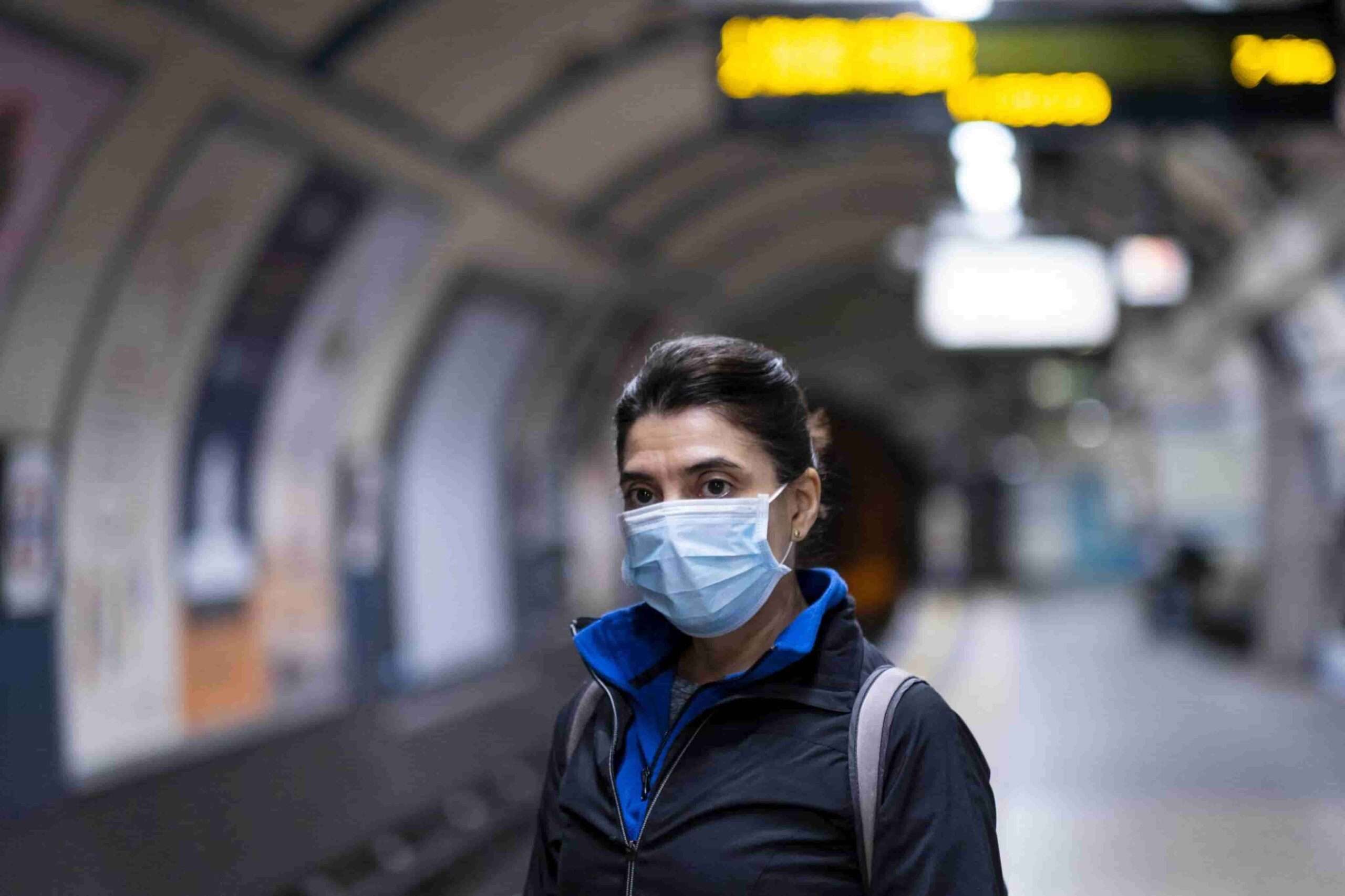This story was originally published by Undark and is reproduced here as part of the environmental insights and news to encourage people.
Christopher Mason began this ordeal when his 3-year-old daughter unwittingly licked a subway pole. As any parent would be, he was both alarmed and curious: What sort of microbes might be living on this metal pipe which was touched daily by commuters?
Mason, a geneticist at Weill Cornell Medicine, became fascinated with that question after his toddler had an unpleasant diaper incident. Inspired by his toddler’s disgusting encounter, he set off on an endeavor to explore how bacteria, fungi, and viruses cohabit with over 8 million New York City citizens in urban jungle environments like Manhattan.
In 2013, he initiated a project that sent out a small army of students carrying packs full of latex gloves, vials, and sterile Q-tips to every open metro stop in the city. These students conducted random samples from turnstiles, benches, kiosks, and turnstiles at every open metro stop – an expedition into uncharted territory similar to Mars or deep-sea canyons full of lifeforms both known and unfamiliar.
Swabbers were collecting environmental DNA or eDNA. This consisted of sampling cells that humans, animals, and microorganisms shed during daily activity leaving behind genetic fingerprints that scientists slowly quantified and mapped in order to create an invisible map of all the microbiome diversity present throughout a city.
In 2015, they reported discovering over 1,600 different species of microbes, nearly half of which had already been described by science. Most were harmless to human skin and digestive tracts while 12 percent were known pathogens such as fragments similar to bubonic plague and anthrax–though no evidence showed they could make anyone sick. They hadn’t discovered any new deadly viruses lurking underground yet.
Four years later, in late 2019, Mason and his colleagues learned of an unknown pneumonia-like disease circulating in China. “Initially we weren’t concerned,” Mason remarked, but by January it had spread across the ocean and into America. Subway swabbers became frontline workers monitoring Covid-19’s presence not only within transit systems but also hospitals, wastewater facilities, and wastewater plants – “we developed new medical protocols and tools which could be deployed anywhere”.
Today, COVID-19 has claimed nearly 80,000 New Yorkers, nearly 1.2 million Americans, and approximately 7 million worldwide. The pandemic spurred technological innovations allowing scientists to quickly characterize organisms leaving genetic traces in the environment; similarly to hurricane-driven innovations in weather surveillance and building engineering; COVID-19 has driven advances in pathogen-hunting science.
Over the last 15 years, research on environmental DNA (eDNA) has experienced explosive growth thanks to advances in sequencing technology, computing power, and metagenomics (the study of DNA from multiple organisms). Scientists across the world can now take samples from cups of dirt, vials of water, and puffs of air to explore and survey eDNA present for thousands of microbial species present. While the field has experienced some concerns related to privacy and technical limitations, many scientists see an opportunity in the early detection of emerging pathogens. Wastewater surveillance remains the premier means for monitoring population-level virus spikes, but other realms are making inroads into monitoring an outbreak as quickly as possible and taking necessary measures to contain it. Health officials are becoming more efficient at quickly recognizing an outbreak and taking appropriate actions against it quickly and efficiently.
Experts predict that technology may soon reach such sophistication that an environmental sample from high-risk locations, such as wet markets, hospitals, and conference hotels can be quickly sequenced using portable devices that report whether pathogens exist. Researchers use genomic databases for rapid identification of pathogens and microbes. Scientists are working towards “monitoring high-risk interfaces in real-time”, according to Erik Karlsson of Institut Pasteur du Cambodge a nonprofit research institution located in Cambodia.
Scientists consider virus hunting to be an early warning system: the aim is to locate pathogens that could spark disease outbreaks before they have the chance. They stress the importance of monitoring high-risk areas where animals and humans cohabitate – typically on the borders between populated areas and tropical forests where hunters capture animals for food, pets, medicine ingredients, and medicine-making purposes, or markets where slaughtered animals are sold for consumption.
“Our motto is, ‘Get left of sneeze,'” explained Karlsson who monitors for avian influenza and other pathogens in Cambodia’s live bird markets. That means they strive to detect potentially threatening pathogens before they spread to humans or another species and cause outbreaks – “Our aim is to get ahead of that,” Karlsson stated.
Studies show that more than 70% of infectious diseases that have emerged since 2000–such as Ebola, HIV, and pox (formerly monkeypox)–have spread from wildlife to humans in recent decades, known as “spillovers.” This trend has only increased with time.
Research indicates one primary event that typically precedes an environmental spillover: forest clearing.
As forests are cut down for timber, farming, and human development, residents and workers in adjacent areas hunt and scavenge for animals for use as food or for sale as pets or medicinal products, sometimes illegally. Handling animals exposes people to potential pathogens; whether one of those pathogens makes its way onto human bodies depends on many factors including viral evolution and human immunity.
Forested areas in Africa and Southeast Asia that have seen vast tracts of once pristine wilderness cut down are some of the primary hotspots for animal-borne, or zoonotic, diseases to emerge. According to WHO estimates, Africa alone saw a 63 percent increase in outbreaks over ten years – these outbreaks included Ebola, viral hemorrhagic fevers, dengue, anthrax plague, and pox.
Ebola stands out among its class as a highly dangerous and devastating illness, first identified in 1976 and first diagnosed subsequently. First identified, this virus causes massive immune system malfunction by overloading it to damage blood vessel walls severely enough that they begin leaking blood from arteries, veins, and capillaries into medical shock or organ failure.
The largest Ebola outbreak ever was launched in December 2013 when the Ebola virus that had been living in bats somehow spread to Emile Ouamouno, then 18 months old in southern Guinea. He quickly developed a fever, passed stool blackened with blood, and vomited for days prior to succumbing quickly thereafter. His mother, sister, and grandmother also fell sick within days and eventually passed on as well.
Soon the disease was detected in nearby Gueckedou, a city with nearly 350,000 residents, alerting world health officials of an Ebola outbreak. Over time it spread through Sierra Leone, Liberia, Nigeria, and six additional countries, including three cases in Dallas Texas in 2016. By 2016, over 11,300 had died from Ebola infection while 28,600 had contracted it – all this during an epidemic that eventually ended with 28600 cases being infected and deceased from Ebola infection.
Eeva Kuisma works for the Wildlife Conservation Society, an international conservation group. In the Republic of Congo, she is working to expand a project that could become the first long-term surveillance program for Ebola and other diseases based on forest environmental DNA sampling. This research builds upon an ongoing public education and disease surveillance program where researchers travel to rural communities and educate people on the dangers of Ebola virus infection and other animal-borne diseases; how to minimize exposure; hunting/foraging regulations are enforced through hotlines to report sightings of animal carcasses found in forests; so far this program has engaged 5,800 hunters across over 290 villages.
As part of Kuisma’s new study, survey teams will spend 12 months every five years walking systematic transects over more than 8 million acres of forest, collecting DNA samples from animal carcasses and feces along their route.
Representing various animals ranging from gorillas and chimpanzees to river hogs and antelopes, samples are currently being examined for Ebola and other pathogens using DNA analysis techniques developed over recent years by Kuisma and her colleagues. Their tests compare genetic material against databases of DNA sequences to identify bacteria as well as pathogens or viruses present.
Kuisma noted that long-term data from this project would prove invaluable in tracking Ebola or any other pathogens against changing landscapes, such as proposed road projects linking Congo, Chad, and Central African Republic – areas considered “pristine rainforest until recently”, according to her.
Environmental sampling for the Ebola virus remains in its infancy, yet ongoing environmental sampling could one day prevent a spillover and save lives. If researchers detect signs from animal populations that an epidemic is active. For instance through their feces or carcasses – Kuisma explained, then environmentalists can alert people, warn them, educate them not to consume carcasses, pick them up or otherwise handle them, and warn people accordingly.
Over the last century, Southeast Asia has been one of the main epicenters for emerging zoonotic diseases – and more recently their risk has only grown greater. Population growth, deforestation, climate change, and an explosion in poultry and pig farming have led to Middle East Respiratory Syndrome, Zika virus infections, and Highly Pathogenic Avian Influenza or HPAI infections being seen all too regularly across this region.
Karlsson is a virologist in Cambodia who oversees researchers in Phnom Penh collecting environmental samples in areas where people and animals cohabit. Researchers previously had to collect biological samples manually such as feces, blood, urine, or other biological samples by hand. Rapid genetic sequencing has made their work faster and safer allowing Karlsson’s team to quickly collect environmental samples in Phnom Penh areas with mixed populations more quickly and safely than before. “Environmental samples are great for speed,” Karlsson stated, as we don’t need permits nor trained personnel trained on how to handle potentially dangerous animals like bats or something similar – instead you can go out in Phnom Penh environment to collect environmental samples quickly.”
Karlsson’s team recently developed an effective new tool for hunting viruses, air sampling. Karlsson uses air filters designed for construction workers or hotel lobbies as part of an air purification system to test public markets where vendors slaughter, clean, and defeat chickens at high-risk areas for an avian influenza outbreak.
Researchers published in March 2023 a study in which they recruited vendors scattered throughout a market to wear personal air samplers for 30 minutes a day for one week during periods when avian influenza in poultry is predicted to increase (February-May) and then decrease. Viral RNA was detected in 100% of air samples taken, decreasing as people moved further from chicken slaughter areas – further validating Karlsson’s statement about them being “high-risk areas” that required interventions such as improved ventilation measures.
Karlsson’s team has turned to hand-held air-filtering devices no larger than credit card readers to sample for viruses in places that pose both challenges and risks for researchers to access, like bat caves. Bats are reservoirs for various viruses such as Covid-19 that infect humans; their samplers can easily enter these caves while scientists wait outside. They use toy drones or remote-control cars with these small samplers in tandem for rapid entry into bat caves while waiting outside.
Karlsson often considers what other technologies could be utilized for passive, remote sampling–with the ultimate goal being a comprehensive machine that collects samples on-site as well as processes them immediately. “Maybe we could attach it to something like Roomba and have it constantly vacuum the floors while simultaneously sucking up samples?” he asked rhetorically. “You see there are lots of possibilities here.”
Peter Thielen is a molecular biologist at Johns Hopkins Applied Physics Laboratory where he directs viral genomic surveillance projects, often working closely with Karlsson. According to Thielen, Karlsson has been perfectly situated in an area prone to disease spillover to pilot some of the latest technologies that speed response time to outbreaks – taking his laboratory right out into the field is precisely what’s needed, according to Thielen.

Scientists may work to detect pathogens floating in the air, but the COVID-19 pandemic really opened up new avenues for hunting viruses in wastewater. Since people shed genetic material from COVID-19 into their feces and urine, wastewater surveillance became one of the best ways to monitor disease spikes even prior to them becoming symptomatic.
Wastewater monitoring was no novel concept: its origins date all the way back to 1850s London when John Snow, a British physician, investigated an unusual cholera outbreak. Londoners quickly nicknamed it the “blue death,” as dehydration due to diarrhea and vomiting led to dehydrated patients who appeared like living corpses due to intense diarrhea and vomiting; many believed a “miasma”, an evil cloud of polluted air was to blame.
Snow was convinced that cholera was waterborne. After carefully mapping each case and finally tracking their source to Broad Street in London’s West End where there was an infected water pump with its handle still attached, Snow persuaded local council members to have its handle removed, thus ending its spread and eventually leading to modern epidemiology as it exists today. He is often celebrated as being “the father” of modern epidemiology.
Over the last century, wastewater has evolved into an essential tool for monitoring community health, particularly tracking drug use trends in cities and rapidly eliminating polio outbreaks. Yet ten years ago wastewater was only being considered marginally widely; an Environmental Protection Agency scientist proposed creating a nationwide monitoring system but couldn’t get anyone on board his plan at that time.
In September 2020, the Centers for Disease Control and Prevention finally inaugurated their country’s inaugural National Wastewater Surveillance System – which collects and tests wastewater samples that flow into treatment plants to assist local response efforts – but by then more than 200,000 Americans had died from Covid-19 virus. If such a system had been operational when COVID-19 first hit U.S. shores it may have been detected more rapidly, according to Mason, the geneticist from Weill Cornell Medicine: “We would have known immediately where it was appearing and we would have known immediately within days or two where this virus appeared.”
Wastewater continues to provide important insight into where the COVID-19 virus is circulating and where people may be at risk of exposure, especially now that home test kits have replaced clinical testing as the standard tool of analysis. Wastewater also allows health officials to keep an eye out for new COVID-19 variants as they emerge and track their spread more easily than ever before.
“We’re officially out of a pandemic, but there are still circulating viruses – something interesting is seeing them in wastewater,” Mason noted. If virus levels spike as they did earlier this month (reaching levels similar to late 2020) health officials can alert the public and advise taking precautionary measures such as mask-wearing, hand washing, and social distancing to reduce exposure levels. Mason noted it’s encouraging to note most people have either received vaccination or already been infected and most cases of infection have either been addressed through vaccination or infection or both methods – which provides peace of mind to health officials as health officials can manage exposure more effectively than before. “It’s good that most people either had received vaccination or already been infected so most cases will have either been addressed,” added Mason.
Experts state that resources invested in developing wastewater pathogen surveillance infrastructure have put the United States in a better position to detect and address other health threats, including antibiotic resistance, foodborne illnesses, MPOX virus infection, and respiratory syncytial virus (RSV), although experts point out the program is still new and may pose ethical and privacy concerns.
Testing wastewater can be more cost- and time-efficient than testing hundreds of people or doing blood testing, yet wastewater remains unregulated when it comes to privacy rights. Who gets to decide what they flush away and its disposal remains unclear. Recently, the National Academies of Sciences issued a report outlining ways the national wastewater surveillance system must implement sufficient oversight measures to safeguard privacy rights while expanding to cover more communities simultaneously and track multiple pathogens simultaneously – as well as adapt to emerging threats when one spikes.
Mason joked, joking that each time someone flushed, and no samples were collected for epidemiologists to review, somewhere an epidemiologist was saddened by this oversight. Mason explained, however, that wastewater contains vast amounts of information – something we are only just beginning to tap.
After Mason completed his work mapping New York City’s microbiome, researchers from around the globe approached him about conducting similar swabs of their cities too. To meet growing interest, he and Evan Afshin, a medical student at New York Medical College, established the Metagenomics and Metadesign of Subways and Urban Biomes consortium which currently encompasses scientists from more than one hundred cities globally rubbing Q-tips on surfaces within transit systems, sewage canals, hospitals and other public places.
Naturalists have long used atlases of birds or fish found across North America or in the Pacific to track population trends. Mason and his colleagues are following this tradition by compiling an atlas of microorganisms found in urban mass transit systems worldwide. Now sequencing technology and AI-powered software to develop this global reference library of microbes as an open-sourced platform. “We want it so anyone anywhere can upload their DNA sequence and compare it to anything that has ever been sequenced,” explained Mason.
“This global system connects all labs around the world to be able to detect any new virus that might emerge,” Mason stated in an email. By understanding where risks reside and discovering entirely new species of creatures in nature. By tracking all types of microbes, researchers could discover new antibiotics while tracking and mapping antibiotic resistance, with potentially far-reaching implications if such an early warning system catches a pandemic pathogen down the road.
Still, many pathogen trackers hold onto a dream: to one day create an effective worldwide disease surveillance system on par with weather forecasting. Information such as air pressure, temperature, and wind currents feed into weather maps that help forecasters detect developing storm patterns and develop response plans. Similar information from microbiome data could feed into a global disease surveillance system – an expensive endeavor but worthwhile considering “money spent on pathogen surveillance is much cheaper than shutting down an entire economy,” Mason stated.
Scientists have learned a great deal from the Covid-19 pandemic, he noted. Now they just need to apply these lessons.
Source Mother Jones







